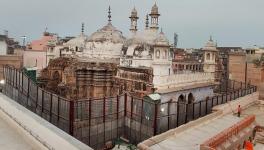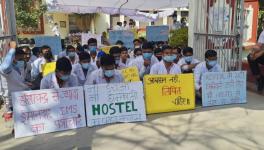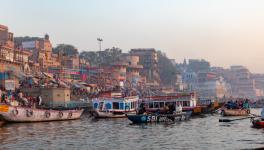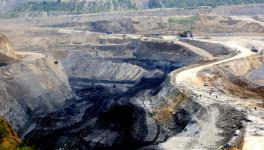Modi’s Namami Gange a Failure, Says Report
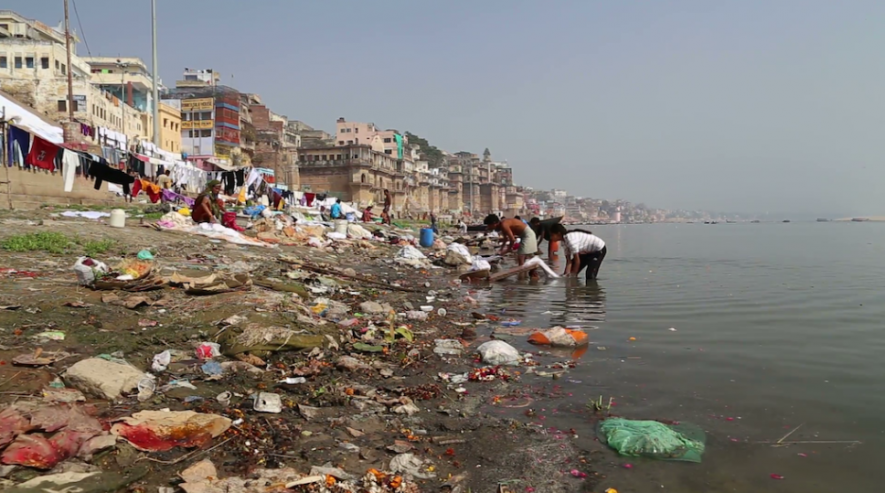
Back in 2014, while filing his nomination from Varanasi in Uttar Pradesh, Narendra Modi said: “First I thought the BJP sent me here, and then I thought I am going to Kashi, but after I came here, I feel Maa Ganga has called me. I feel like a child who has returned to his mother’s lap”. He further said: “Ma Ganga is waiting for her son to free her from pollution”.
And thus came ‘Namami Gange’ — the Bharatiya Janata Party-led Modi government’s much-vaunted programme for cleaning up and reviving the dwindling flows of Ganga, considered a holy river by Hindus, which fetched a budget outlay of Rs 20,000 crore.
Now, after five years, cleaning the Ganga, even at the starting point—Rishikesh and Hardwar -- remains far behind the goal.
A recent Mirror Now ground report says that sewage water still continues to drain the flow of Ganga. Residents had been complaining about this but to no avail.
In Uttarakhand, the Ganga travels a distance of 250 kilometers. In these 250 kilometers, 15 towns were selected for cleaning the Ganga and among these Rishikesh and Hardwar were the prominent ones where the Namami Gange was implemented.
In the project, 31 sewage treatment plant (STP) were proposed, but only 16 of these have been set up till date; 65 drains were to be tapped, but till now, only 26 drains have been tapped, as reported by Mirror Now. The report further says that construction work on the banks of Ganga and of dams are hampering the river’s natural flow.
Notably, in May 2018, the then Union Water Resource Minister Nitin Gadkari declared March 2019 as the new deadline to clean up Ganga. But the latest Mirror Now report indicates the total failure of this declaration
Pollution Levels Higher Than in 2014:
Not only was a lack in implementing the clean Ganga project seen in the last five years, but the pollution level in the river also went rose than it was before 2014. An RTI reply revealed last year that pollution levels in the river are higher than the levels recorded in 2014. Particularly in Varanasi, which is the constituency that Modi himself represents, lab tests found that bacterial contamination was now higher than the levels in 2014.
A Comptroller and Auditor General (CAG) report disclosed that the level of pollutants in the river across Uttar Pradesh, Bihar and Bengal was six to 334 times higher than the prescribed levels during the period 2016-17.
The living testimony of utter negligence by the Modi government in cleaning up Ganga can be witnessed when one lands up in Varanasi. Black sewage making its way into the flows of Ganga, plastic litters, carcasses, trash and human and animal excreta giving rise to a toxic cocktail and an obnoxious stink oozing out of it—this is how one finds Ganga in the ghats of Varanasi.
Dams Hamper the Steady Flow
One of the objects of the Clean Ganga mission was reviving the river’s uninterrupted flow. Contrarily, the Modi government revived and approved dams for hydel power generation. This is a blatant undermining of the ecological damage and destruction that the dams could cause to the river.
A Scroll report early this year noted that: “Since 2002, Uttarakhand, where the Ganga originates, has been on a drive to build hydel power projects. The state, which currently produces 4,000 MW of hydel power from 98-odd projects, has since 2009 signed agreements to build another 350 dams,”
Also Read: Ganga in Deeper Troubled Waters Than Ever, So Much for Modi’s ‘Namami Gange’
What’s more, “Most of these are diversion dams, which block the river and divert its water through tunnels to turbines that generate electricity. The river rejoins its original course only after passing over the turbines, leaving riverbeds dry between the dam wall and the tunnel’s outlet”, the report pointed out.
In 2010, three hydel projects were cancelled in Uttarakhand while declaring a 100-km stretch of the Bhagirathi, from Gaumukh to Uttarkashi, an eco-sensitive zone.
Again, ““Two years later, environmental studies ordered by the Uttarakhand High Court proposed a minimum distance between hydel projects and suggested that each dam be required to release enough water for a river to perform its ecological functions. This is called ‘environmental flow’, or e-flow”—the Scroll report says.
A study by the Wildlife Institute of India had recommended that 24 proposed hydel projects on the Alaknanda and the Bhagirathi be cancelled, and the recommendations were later endorsed by two committees.
Then in August 2013, after the ravaging flood of Uttarakhand caused by cloud bursts, the Supreme Court banned new hydel power projects in Uttarakhand.
But, after the advent of BJP at the Centre in 2014, the Modi government rolled back almost all of these measures from 2015 till 2016. In 2016, the Modi government decided to allow dams in the Bhagirathi eco-sensitive zone.
Reviving the dams in Uttarakhand will hamper the tributaries that contribute to the flow of Ganga, and this, in turn would, hamper Ganga’s uninterrupted flow.
Get the latest reports & analysis with people's perspective on Protests, movements & deep analytical videos, discussions of the current affairs in your Telegram app. Subscribe to NewsClick's Telegram channel & get Real-Time updates on stories, as they get published on our website.













